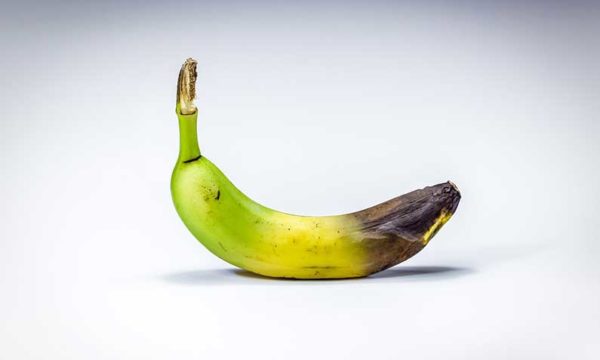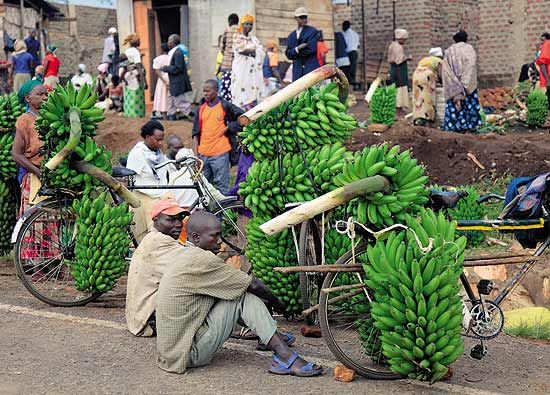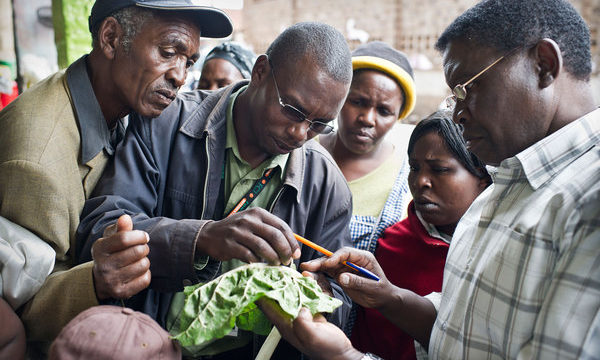Black sigatoka, or black leaf streak disease, a disease of bananas and plantains caused by the fungus Mycosphaerella fijiensis, has caused widespread losses to banana crops over the past 50 years. A new study of the phylogeography of black sigatoka on banana leaves from around the world has helped to elucidate the recent origins of this fungal disease.
The disease was first recorded in Fiji in the 1960s and, by the early 1970s, was being observed in Africa and tropical regions of the Americas. Previous studies, predominantly based on first reports of the disease, placed the origins of sigatoka in the Solomon Islands, east of New Guinea.
Researchers from the French agricultural research centre, CIRAD, used banana leaf samples from 37 countries in South East Asia, the Americas, Africa and Oceania to examine the differences between populations of the sigatoka fungus. They analysed several microsatellite and nuclear sequence-based markers in each of the samples to determine the genetic diversity of these populations. From these analyses they concluded that the current, highly pathogenic form of M. fijiensis originated in South East Asia around Malaysia, the Philippines, Indonesia and Papua New Guinea, but not the Oceanian islands of Fiji and New Caledonia as previously thought. This matches up with South East Asia being the origin of the cultivated banana so it is possible that fungus and host co-evolved in this region.
By testing samples from different parts of the world it was possible to build up a picture of how the disease has spread globally. The populations from the Oceanian islands and Papua New Guinea are closely related so it is likely that introductions of diseased vegetation was made to the South Pacific islands of Fiji and New Caledonia. The genetic results suggest that the populations of sigatoka in Africa originate from one single introduction of the fungus that came from an area of South East Asia around the South China Sea. However, this is not the case for the American populations. These have genetic characteristics of both South East Asian and Oceanian populations, which could be from multiple simultaneous introductions of the fungus in one place, probably around Honduras, where the first official report of sigatoka from the Americas was made in 1972.
It is not surprising that many introductions are made in places connected to banana and plantain trade routes. While this species is spread less rapidly by humans than other crop-infecting fungi because it doesn’t infect the banana fruits, new reports are frequently being made around the world. The disease was reported in Cuba in 1991 and has since spread around the Caribbean, most recently to St Lucia and Martinique. Current measures to control the fungus include frequent fungicide applications and good phytosanitary practice but these measures are often expensive for farmers. Focus is now on developing resistant varieties of banana but, for a disease-causing organism that has adapted and spread so quickly, it will take highly co-ordinated methods of implementation to beat this fungus.
Sources:
Robert, S., Ravigne, V., Zapater, M-F., Abadie, C. & Carlier, J. (2012) Contrasting introduction scenarios among continents in the worldwide invasion of the banana fungal pathogen Mycosphaerella fijiensis. Molecular Ecology 21: 1098-1114. Available from: dx.doi.org/10.1111/j.1365-294X.2011.05432.x
Taylor, A-L. (2012) Global march of banana fungus revealed. BBC Nature News. Available from: http://www.bbc.co.uk/nature/17194559
Related News & Blogs
Asian Farmers Consult Vibrant E-Plant Clinic Network In Pandemic Times
This article was originally published on aesa – Agricultural Extension in South Asia E-Plant clinics are meeting places where local agricultural advisory officers, known as plant doctors, help farmers struggling with plant pests and diseases. During th…
22 July 2020





